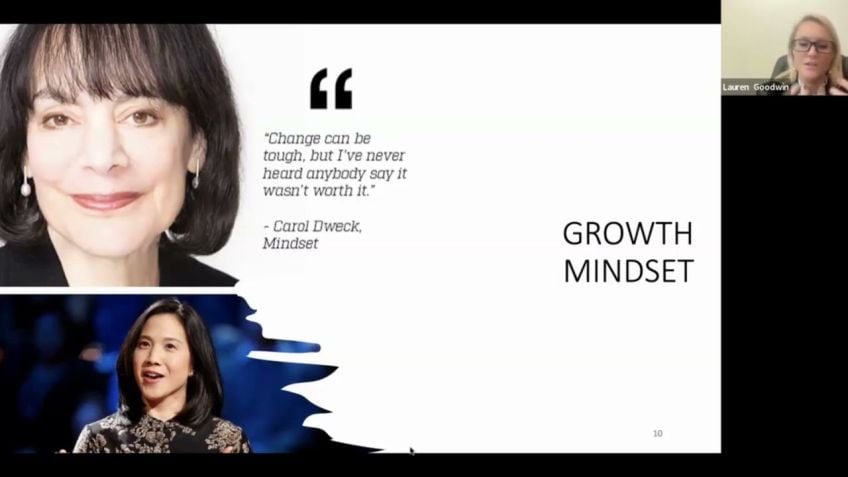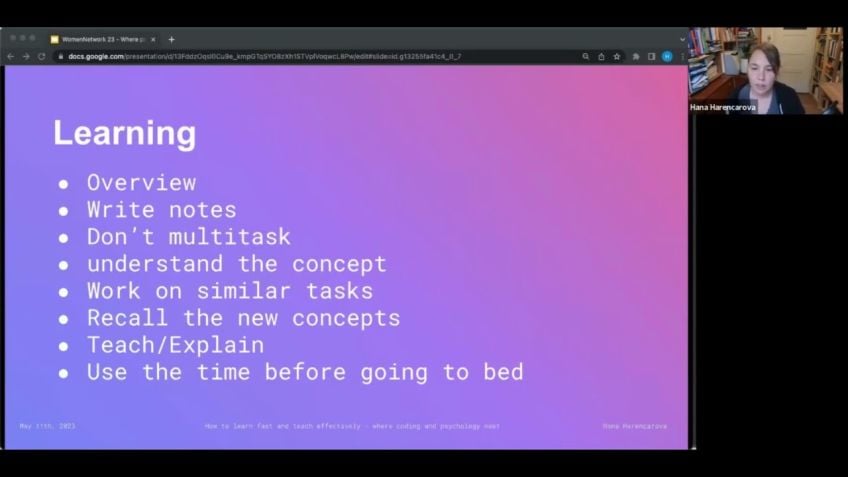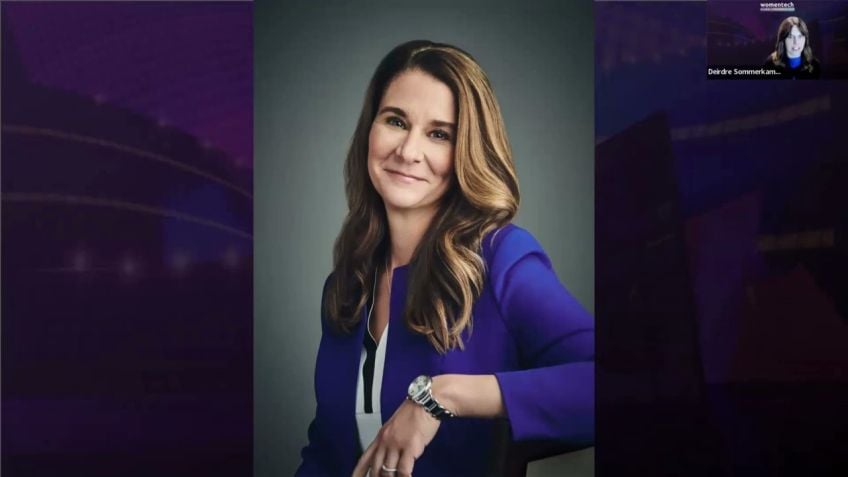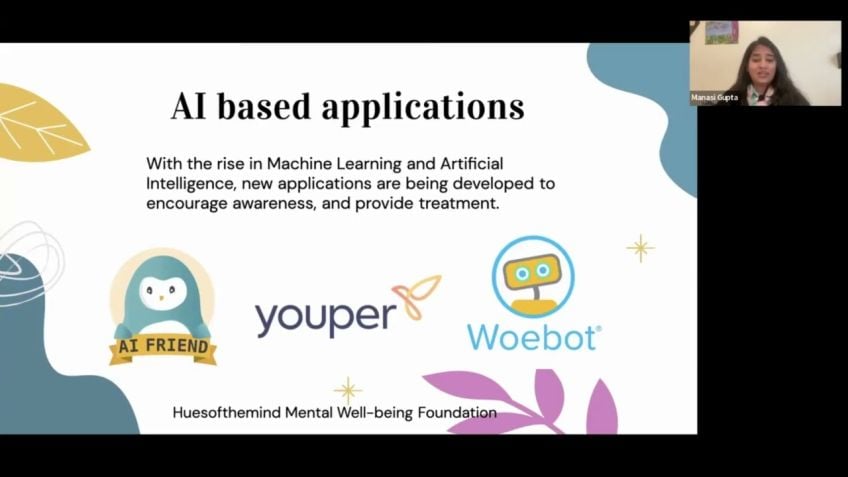The Future of Education is Gameified
Abby Jenkins
Senior Director of ContentThe Future of Education is Gamified: A Reflection on Women in Tech Session
Hello everyone, I'm Abby Jenkins, senior director of content at PBS Kids and I recently had the pleasure of conducting a session at the women in tech event on the potential of games and education. I'm excited to bring you along as I delve into how games are transforming the educational landscape for the next generation.
Bringing Education to Life Through Gaming
The development process for educational games begins with determining the what, the how, and the why of learning. We at PBS Kids focus on creating games that support learning across a broad curriculum, from math to arts, to health and wellness. However, the core of our thought process revolves around young children's needs, particularly their social and emotional needs, and their executive function.
It's not just about what they are learning, but how they are learning, and why they will connect with the experience. To this end, we collaborate with subject matter experts and advisors in child development to ensure our games are both developmentally appropriate and engaging for children.
Integrating Characters and Narratives into Gameplay
As part of our game development strategy, we actively integrate characters and narratives into gameplay. By using characters as models in games, children have a companion to guide them through their educational journey. For instance, in our "Eleanor wonders why" series, children are encouraged to ask questions, make observations and learn alongside Eleanor.
Furthermore, characters in games also serve as powerful and positive role models. This is particularly important for girls and underrepresented learners who often have to challenge stereotypical media representations of who can be a scientist or engineer.
- The character interactions within these games are designed to help children mirror the language of the characters and internalize key concepts.
- Having characters wear clothing suited to their activities and set in everyday contexts moves away from generic stereotypes about who can engage in science and engineering fields.
Making Games Accessible and Relatable For All
We are committed to the principle that games and their characters should reflect the diverse experiences of all children. Series like Jelly, Ben, and Pogo showcases a Filipino family's culture and language, which is woven throughout the game and its related short videos.
Additionally, we strive to make our content as accessible as possible for children of varying abilities. Providing a range of game settings that can be adjusted based on individual needs is one approach we take towards this.
As we look towards the future of games in education, we are eager to explore how new technologies can enhance interactivity in educational gameplay. We are currently developing contingent conversational experiences with characters in games, which can provide responsive feedback based on the child's responses.
Conclusion
In conclusion, games hold the potential to revolutionize the education sector. By focusing on the unique needs of children and integrating key learning targets into engaging, character-rich games, we can transform the learning process, making it more enjoyable and effective for every child.
Video Transcription
Hello, thank you for joining me for the future of Education is gamified session at women and tech. I'm Abby Jenkins and I'm so glad to be with you today to talk about the potential and the power for games and education in my work.I'm senior director of content at PBS Kids and I oversee PBS kids game strategy, creating educational games for Children with a particular focus on young Children, ages 3 to 8 years old in this talk. Today, I'm going to share some of the key ways um that I've seen that games can serve as transformative learning experiences. And also my team and I have spent quite a bit of time testing games and spending time with kids in game contexts. And we'll share some of the takeaways from kids themselves. In my work developing educational games. Game development process really starts to uh with what we're thinking about the, what the how and the why of learning, uh what is the key learning goal and how do you want to deliver it through the game mechanic and why will kids connect to that experience? So that really sort of the beginning of the, the process at PBS kids, we approach the game development and thinking about the whole child in mind and creating experiences that support learning in a wide variety of curriculum areas.
From math literacy, stem social studies, the arts and health and wellness. Uh But at the core, we're really thinking about young children's needs and it starts with their social needs and their emotional needs and also their executive function. So things about understanding feelings, relationships and awareness building.
So really holistic approach and surrounding that, as you'll see in this model, we're also thinking about the skills that kids will need for the future. So, creativity, critical thinking, communication and collaboration and these are cross cutting skills and apply to all domains.
Um It's really important in our process um to work with um subject matter experts and advisors in child development. Um So they're really doing this, getting the specific curriculum needs of young Children in mind as we're thinking about development, appropriate ways and inclusive and engaging ways um to center the child throughout these experiences. So let's take a look at how this comes together in a particular game from a show and game from the series. Uh Eleanor wonders why uh this is a game and show. So we do games and shows at PBS kids that introduces Children 3 to 5 years old to science inquiry, an inquiry. In this case, we're really thinking about um encouraging kids to ask lots of questions, pursue their interests and make observations. Um As you can see, we have three characters here. Um Eleanor is at the center with her magnifying glass and we're thinking about characters as models in games. So really character and narrative driven gameplay in this context where kids and players have Eleanor as a companion.
And in this nature adventure game, Eleanor and friends are using tools to observe and document what they discover along the way. So with characters like Eleanor's guides, player will hear them model asking questions such as I wonder and carrying out investigations with prompts like let's try.
And so during formative and early testing um of this particular game, we found that kids did not know the word curious and we were surprised at that. Um But they said they heard it for the first time when playing this game or watching the show with Eleanor wonders why we also heard kids mirror back as they were playing the game because they often talk out and narrate their own game play modeling, the kinds of things that Eleanor would say such as we need more observations.
So as kids are playing and and uncovering new things in the game they were using and mirroring back the same uh uh kinds of language. In addition to the modeling skills and practices, characters in games can also serve as powerful and positive role models. Um And since we're a part of a women in tech event, I thought I'd lead off with some ways that games can empower future women in stem. So here are a few screens from several PBS kids, science and engineering games. What you notice uh you might see here is a variety of science and engineering related activities um being depicted including exploring the outdoors. Uh We think this is particularly important for girls and by pop learners who have to overcome media representations that often reinforce very generic stereotypical views of who can be a scientist or who can be an engineer. For example, in the top left corner, you see Molly of Denali of a native Alaskan girl with her mom doing science as a family activity during a forest walk. Characters in these games are wearing clothing suited to their activities and they are not depicted in stereotypical ways like wearing a white lab coat in a lab because there are so many awesome ways to do science.
So it's really important for that us to depict that in games, the message in context for exploring stem concepts here from studying an animal habitats should be that science is for everyone. Science is active and it can happen anytime and anywhere in taking it a step further relatable and aspirational context in games can spark learning away from the screen. So not unlike the science games um that was just sharing, it also can help kids see their role um and the role of the characters in the games. And then taking a step further in their own play. So as a game designer, I'm thinking about how the game can be a springboard to learning and doing more around a concept on the left, you'll see a sample of a preschool engineering and design app called PBS. Kids Play and Learn Engineering in the app. Kids think in design thinking ways, creating their own roller coaster track around obstacles and tapping into kids play patterns, games can inspire continued play, transferring their creative thinking and problem solving into new contexts. So after playing this game, this five year old on the right, applied some of these same concepts from the game by designing his own roller coaster in his backyard.
You can see a really exciting configuration he came up with and this was just one of many configurations he designed and tried out in other contexts um for your young learners. Um We're inspiring kids to really empower them. Um Not unlike the kid you just saw in the previous one. So here's a screen from our new PBS kids series called Work It Out Wombats. It is a preschool um show about computational thinking and it features three energetic and creative marsupial siblings who live with their grandmother in a tree house apartment. This playful trio demonstrates computational thinking skills for preschoolers and you think can preschoolers do computational thinking. Yes.
And it's important and important. Let me show you how it's important to create that foundational thinking because it really enables them to solve problems, express themselves and accomplish tasks and practices using a computational computer science thinking process. Uh characters in this game are modeling and applying design process sequencing, debugging and other key elements of computational thinking in their everyday adventures in this particular game I'm showing here called Step it Out. Children are applying these concepts in a very relatable everyday task.
In this case, it's how to make a sun butter and jelly sandwich. Children set up a sequence to see if they can successfully create that sandwich. After playing this game, a three year old told his mother he wanted to make his own sandwich. So they got the ingredients and the three year old proceeded to make his own lunch, insisting without any help. It's a wonderful example of not only learning a sequence but seeing how a relatable context will allow kids to fully internalize that concept and apply it in their daily lives. Similarly, for preschool, um who are experiencing many things for the first time games can also provide a way for kids to practice and rehearse new experiences in a safe space and to practice and drive that experience on their own terms. We've heard from many parents that getting ready for the dentist is something that they and their Children could really use support with. So we said we should make a game about that. So this is a preschool game also for Children, 3 to 5 years old and it's from the show, Daniel Tiger's neighborhood Children learn and play about the experience of going to the dentist.
We know that with all those tools, bright lights and a moving chair that that experience can be very overwhelming. So the game um mirrors that experience, but let kids drive and practice what they encounter and can make those experiences a little less intimidating. After playing this game, one child requested to see Mr Thirsty, which is the water sprayer when he went to the dentist and was excited to look for the water spraying tool. When he went, we also know how powerful media and games can be and how more impactful they can be. If kids can see themselves reflected in it, the more Children can relate to and connect with the characters, the more they will learn from them as well as having a lasting impact on their self esteem. All Children across America between the ages of 2 to 8 in our view that p kids see themselves reflected in that media and it should celebrate and give uh space for the stories um that those uh and voices from all those lived experiences. So here I'm showing um a series and game from Jelly. Ben and Pogo shows a Filipino family with siblings, Jelly and Ben and their grandmother Lola Filipino culture and language is w woven throughout the game and also the related uh short videos.
This game is showing is a cooking game, a particular type of cooking game, but focused on a particular dish. It's called super duper halo halo and invites players to make halo halo a Filipino dessert. And the game focuses on a really this really specific dish um with ingredient names presented in Tagalog as well as descriptions of the tastes and textures of each ingredient. So we really wanted this game to not just be a generic cooking game but to be very specific. And also to expose a lot of the linguistic aspects that really make foods come to life. During development of this game, we spoke to Filipino parents and Children as they were playing to get there and put on the direction and they responded that they love seeing a familiar dessert that is specific to their culture. They shared lots of feedback about the importance of having a wide variety of ingredients and sounds and textures when preparing the dish. So a lot of um great details around how how the selection ingredients should work together and play out. So it's really important that, that we captured that accurate to uh mirror that experience of choosing ingredients and combinations when making this dish. And it was also important to show in this game that everyone likes to make their dish in a unique way that suits their own tastes.
So what makes it super duper for one can be super duper in a different way for somebody else. Providing flexible creation tools can also be a powerful way for kids to design and build their own experiences in this engineering and design game. Kids apply simple machines such as ramps and pulleys to create a maze for a hamster to travel. So it's hard to see the hamster in this picture. Um But I wanted to show you a few things. Um One is that giving kids the tools of the game to create their own, really gives them agency and allows them to express themselves creatively and come up with multiple solutions to solve problems. So as they experiment in using these tools, kids are able to iterate on their own designs. And as you can see from this quote, kids are very aware of their own successes and failures, which all adds up to some big brain growing. So this is a quote from one child who is playing, who was very self aware as they were playing um and building this game. So flexible and open ended gaming, making tools also work well for a variety of ages. So you can see here across these horizontals, how playing the same game can be a fun and engaging experience for 56 and seven year olds, even though they play and engage with it differently.
And at their own level, uh we also found that kids would be designing their game for someone else to play when given tools like this. So they may so, so an older kid might design for a younger sibling or a young child might want to design a game that's really hard for their parent to play, making content as accessible as possible for as many kids. Is also a really important aspect of game design, accessibility features and games can further maximize the reach and impact of game content for Children of varying abilities. PBS kids leans into this by prioritizing options that considers the specific needs of all Children and provides a range of game settings so that players can customize your experience with the supports and the options to personalize in the ways that meet their needs. This is an area we're excited to continue to build on and um create more options. Um As we go further in into our product development, some of these options um currently include audio and visual support such as closed captioning, audio description and games, sound options to toggle on and off, including sound effects and music.
And then the art in the U I is also reviewed in development for color contrasts. Additionally, we want to make sure these features and settings are available to games across platforms and across old and new devices. Um to ensure that kids can access these features, not just on newer devices but on any device they might have at home. And then thinking about the future of games, we're looking at how new technologies can potentially support even richer interaction and educational game play PBS.
Kids is currently engaged in research and development with the lab at the uh education school at UC Irvine to develop contingent conversational experiences with characters in games. As you can see here in this photo, characters, ask Children questions, the application listens for their answers and can provide responsive feedback. It also gives young Children a great new way to interact with the game by using their own voice. And in our early research findings, it has shown that Children remember more information and are more engaged with contingent interactions than when not. So we think that offering this closer engagement with characters can help with both learning and empowerment to pursue their own interests.
Our hope is to continue to push the media space forward with these innovations around learning and through games and play and with that. Thank you. Um We have maybe three minutes left. Um But that's all my slides for today and thanks for joining. Um I'll be happy to take a question.






